Lima’s Religious Sites: A Historian’s Guide
Lima’s cathedral, churches and convents are a good way to get familiar with the city’s history. Together, these religious sites tell a tale of colonial authority; but also of survival of pre-Columbian beliefs in a hybrid form.
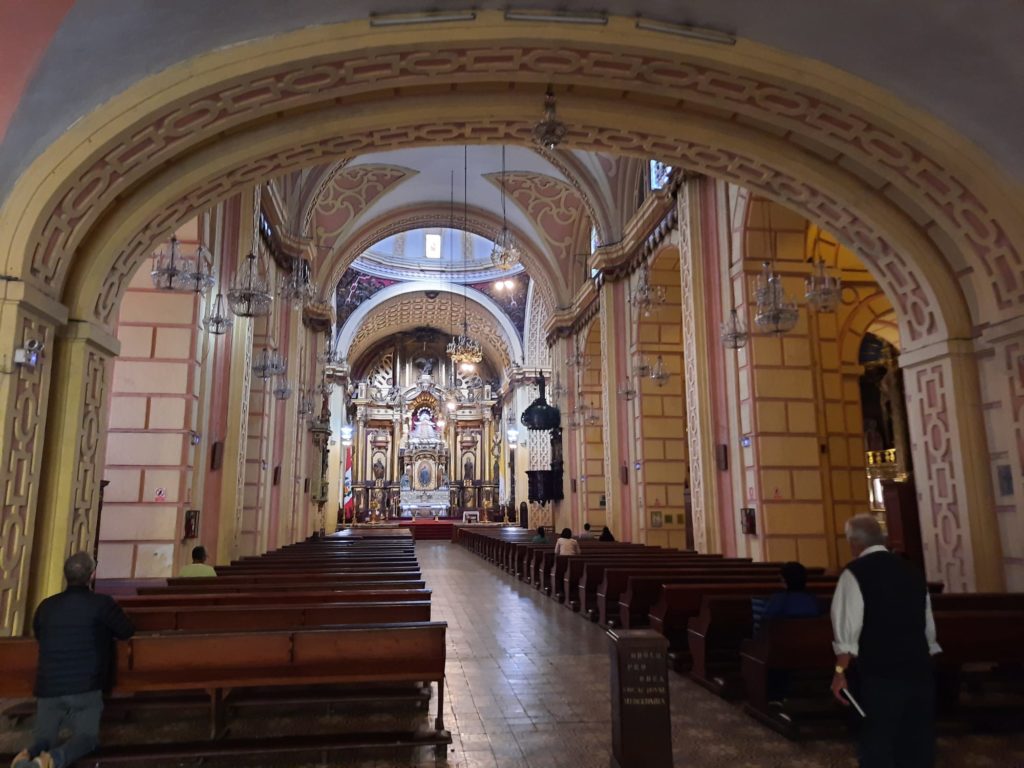
Lima’s Religious Sites: Cathedral, Churches and Convents
The religious landscape in Lima is a complex one. Like many cities, Lima’s cathedral and its churches are frequently tourist spots; and are sites by which to orient oneself in the city. The vast majority are Catholic: this blog post will not go into detail on those which are not. Partly this is because, unless you have an extended period in Lima you’re not likely to get very far down the list of religious sites. And partly because, in my opinion as a historian and museologist, I think the Catholic churches tell an interesting tale.
A handful of Spanish soldiers, under Francisco Pizarro and his brothers, conquered the Inca Empire in the mid-1500s. That such a small number of men (and horses) could bring down an entire empire so quickly is a classic tale of luck and daring. I’m not going to digress too much (you can read more here); but they arrived during a succession crisis, itself precipitated by outbreaks of disease which may have travelled down the Americas from early contact with outsiders.
There are two (or maybe three) key points about this conquest which are very pertinent to our discussion today. Firstly, the Spanish travelled with priests, so religion and conversion were on their minds from the outset. Secondly, Francisco Pizarro had a real habit of razing sites important to local people; building something symbolic in their place. So Lima’s cathedral, for instance, is on the site of an Inca shrine to the Puma Inti. This pattern repeats itself all over Peru, and is most evident in Cusco, which we will visit soon. The third point I wanted to make here is that the conquest took place during the Spanish Inquisition. So the hold of the Catholic Church on Spanish society was at a peak; perhaps it’s no surprise that the churches being built were big and gloriously decorated.
Which Sites To Visit In Lima
So now we know why there are a number of important churches in Lima, why their locations are important, and a little of the context in which they were built. But what are the actual religious sights that you can see in the city?
There are various ways that you can slice and dice this. The way that I understood the city’s churches was by religious order. They’re all represented. There is a Franciscan convent and a Dominican convent. There’s a glorious Jesuit church. There are even the Mercedarians who I hadn’t previously heard of; their full name is the Royal, Celestial and Military Order of Our Lady of Mercy and the Redemption of the Captives. One of their distinguishing features vs. other orders is that they take a vow to die, if necessary, for anyone in danger of losing their faith. So a serious bunch, with a church to match.
Something you will quickly notice in Lima is that most of these churches don’t look like early colonial buildings. They are too big and impressive, for a start, and have too much Baroque or even neo-Classical detailing. The reason for this is seismic. Peru is on tectonic fault lines, and registers about 200 earthquakes a year. So at various points, earlier churches have been damaged or destroyed, and rebuilt. What you see today mostly is the latest version on the foundations of an earlier version (sometimes on top of an Inca version). Speaking of which, you know whose building techniques were far better at surviving earthquakes? That’s right, the Incas. Amazing stonemasons.
Another quick story of Incan echoes in modern Peruvian churches is the type of iconography which appealed to local people. In Peruvian churches you will see firstly a lot of images of the Virgin Mary. And secondly a lot of gold embellishments. You could explain these away as being more common in Catholicism anyway. But there’s also a very compelling argument that this connected the experience of early converts to the ways that they were used to venerating earlier deities including Pachamama, the Earth Mother, and the Incas themselves. Even today, many Peruvians undertake a hybrid belief system that incorporates pre-Columbian elements.
So anyway, let’s look at some of Lima’s religious heavy hitters below. The aim is to give you a sense of what you might like to visit on your own Peruvian trip. If you want more of a general overview of the city, check out the previous post.

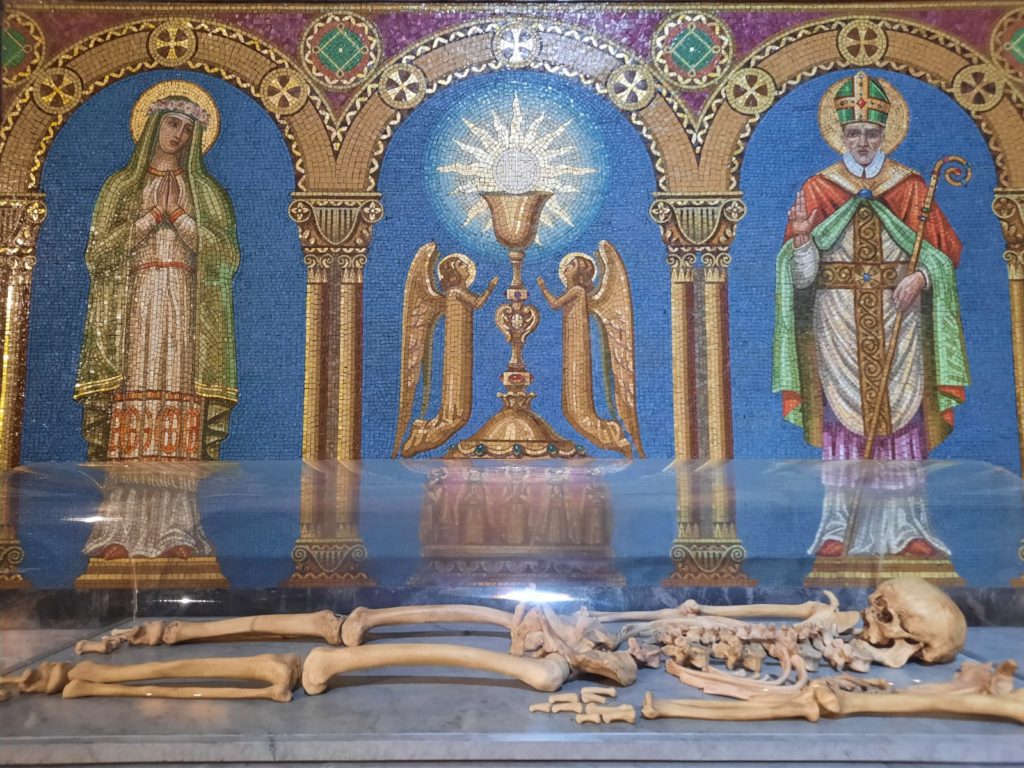
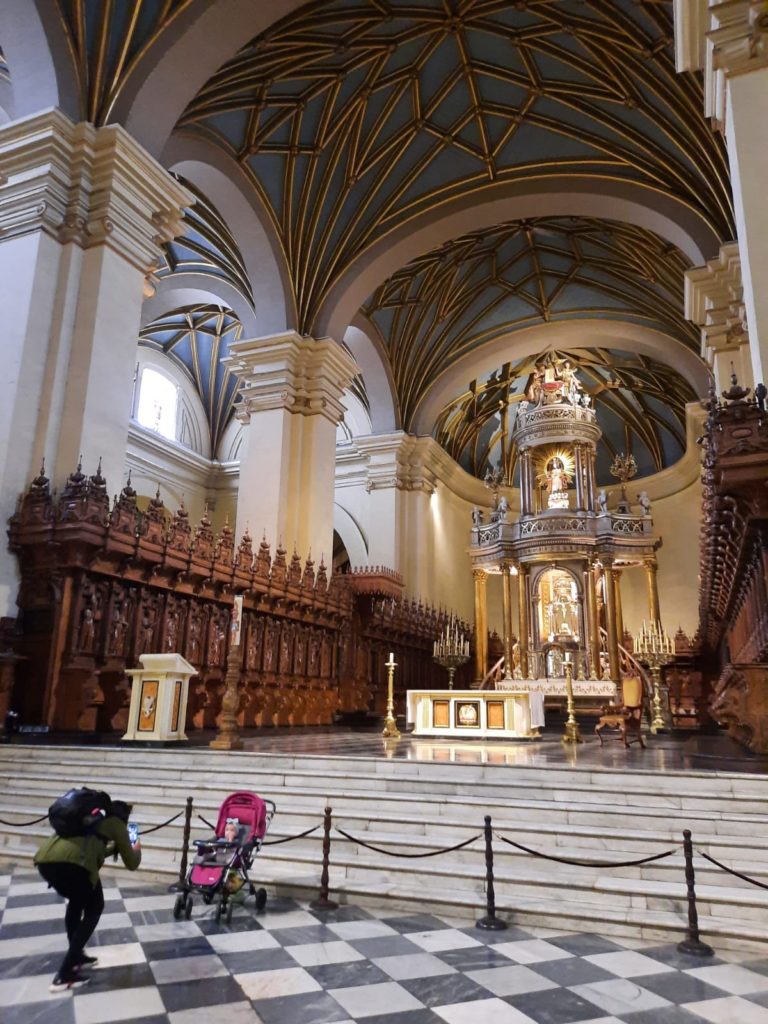
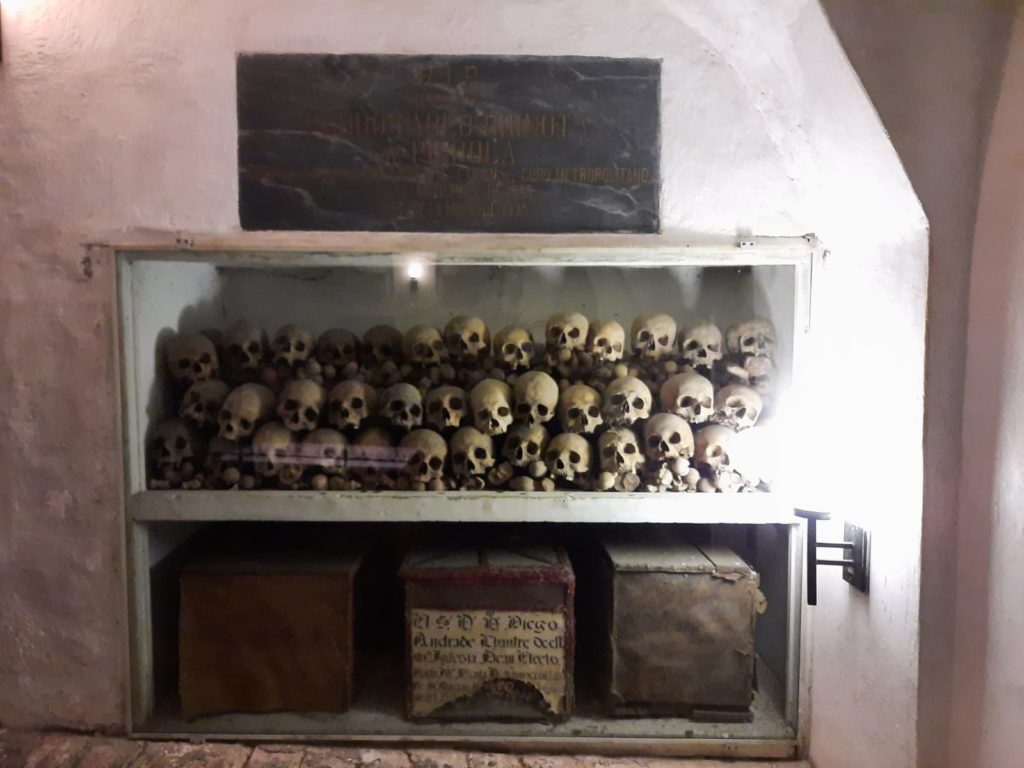

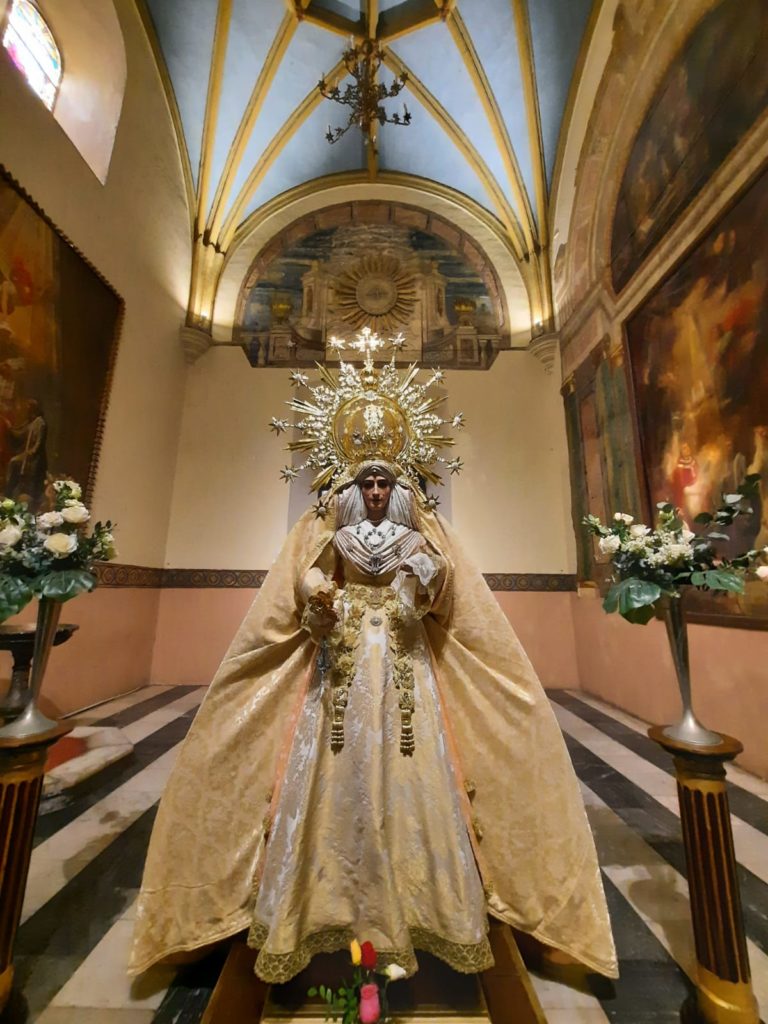
Lima Metropolitan Cathedral
This was the first of Lima’s major religious sites which I visited, and is probably a good place to start. Lima Metropolitan Cathedral is on the main square, Plaza de Armas (as an aside, basically every main square in Peru seems to have the same name so you can’t go wrong asking for directions). As I mentioned above, the cathedral occupies the site of a shrine to the Puma Inti, a sun deity. The first stone of the first version of Lima Cathedral was laid in 1535 by Francisco Pizarro, who also carried the first wood to the site in an act of humility. He wasn’t otherwise a particularly humble guy, but I guess needed to get in the Almighty’s good graces where he could. The current version is the third, and dates to between 1602 and 1797.
Lima Cathedral follows a format that you will begin to recognise as you visit Lima’s (or Peru’s) religious sites. It’s huge, for a start. Along each side there are chapels with absolutely massive altars. Normally these are carved out of wood and dedicated to a particular saint or moment from the life of Jesus or the Virgin Mary. And there are crypts which you can visit and see excavated burials. This isn’t for everyone, so think carefully before entering any underground spaces in Peruvian churches!
There are also two points of difference in Lima Cathedral. Firstly, one of the first things you will come across are the bones of Francisco Pizarro. Or his reputed bones, at least. Pizarro was assassinated in 1541, but what with various cathedral rebuildings and other upheavals, it is certain that the wrong body was displayed as his from 1892 to 1977. Today’s one is probably the right one. The other feature which you won’t find in every Limeñan church is an art museum, with religious paintings and statuary. All in all, set aside a good hour to see everything.
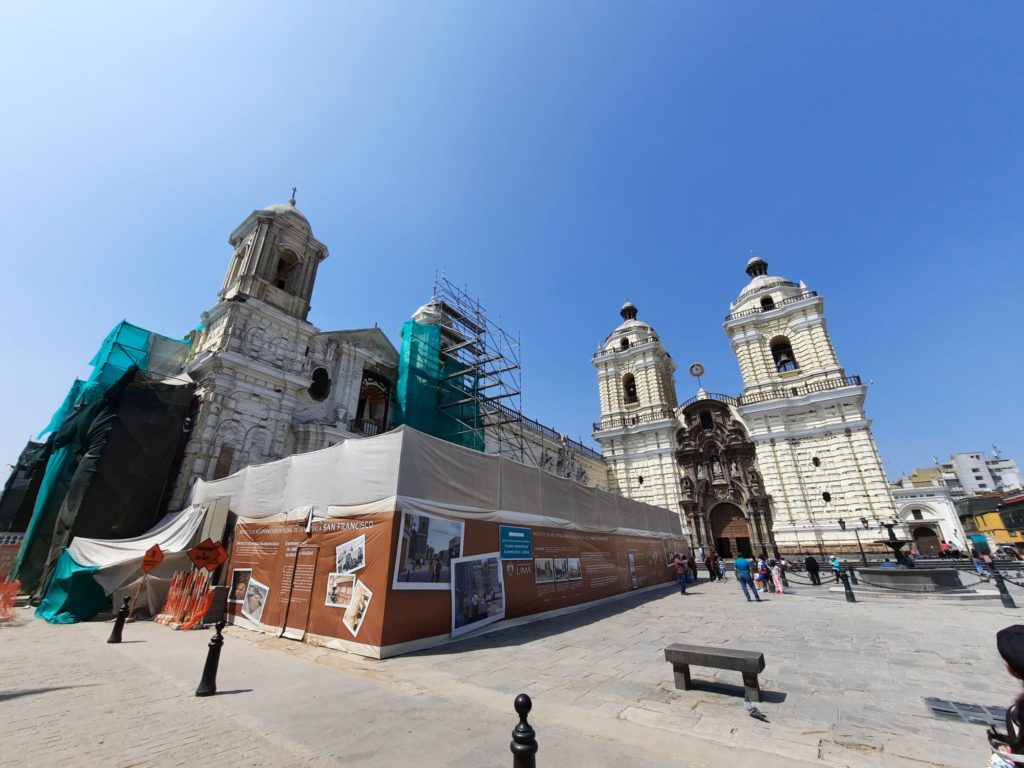
Basilica and Convent of San Francisco
From the Cathedral now to the Franciscans. This isn’t the original Franciscan plot of land in Lima, which the Dominicans took over at some stage. But they’ve been here since 1546, and this is at least their second church on the site. This is one of several religious sites in Lima which still today combines a public church with a closed convent. It’s also one of many which requires a tour guide. Peru is one of those countries where tour guides need to have a license, and seem to be necessary to visit many places. You have the option of hiring a personal guide (they will be waiting outside to solicit your business), or waiting for a group tour in Spanish or English. I did the latter and it was very informative. No photos inside, however, so you’ll just have to imagine what I’m describing.
The main selling point of the Convent of San Francisco, and something your guidebook will be sure to point out, are its catacombs. In the early days of colonialism in Peru, everyone wanted their burial spot as close to God as possible. Generally this meant within the church. This led to the crypts being absolutely stuffed to the gunnels with burials until there was just no more room. In this Convent some of the crypts have been excavated and the remains examined, counted and arranged for display. So today’s tours culminate in a visit to these crypts and a close encounter with some of these early residents. It’s a little like Kutna Hora in Czechia but less decorative. Maybe closer to the practicality of the catacombs in Paris.
Otherwise, today’s structure is a neo-Classical one. You will see peaceful cloisters lined with impressive paintings, a wonderful old library, and the choir. I enjoyed seeing the huge music books and revolving stands, between them ensuring that everyone could see what they were singing. Between the two convent/churches, the Dominican one below would be my pick. They’re quite similar, however. So if you have limited time you may want to choose between catacombs or a bell tower.
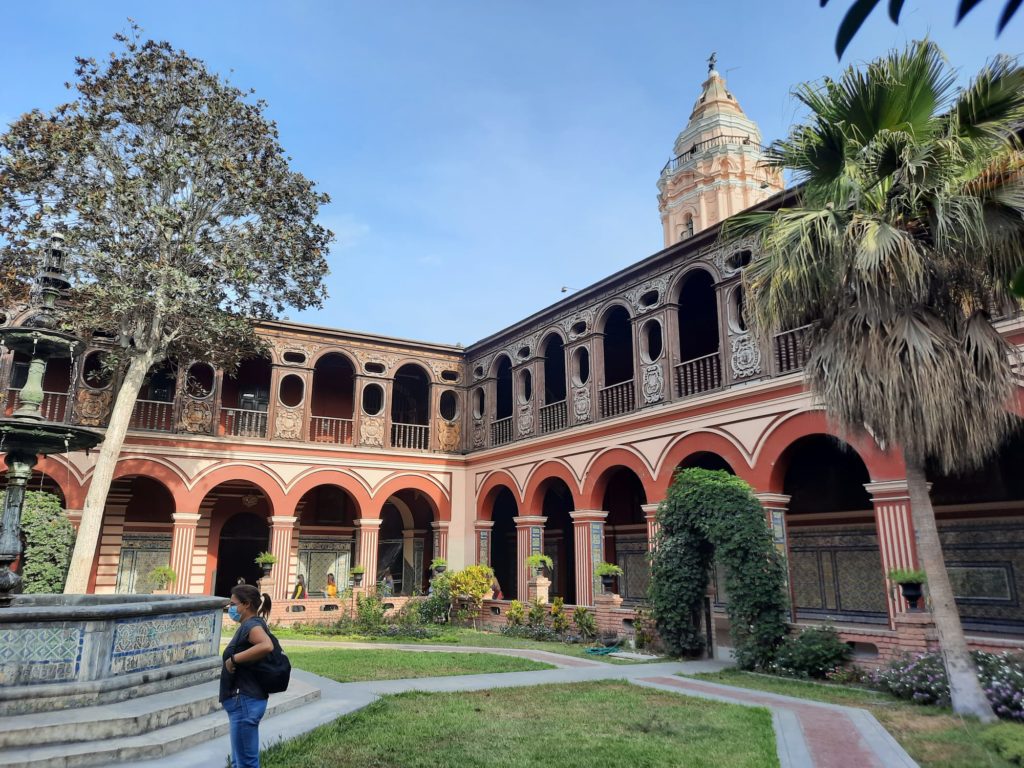



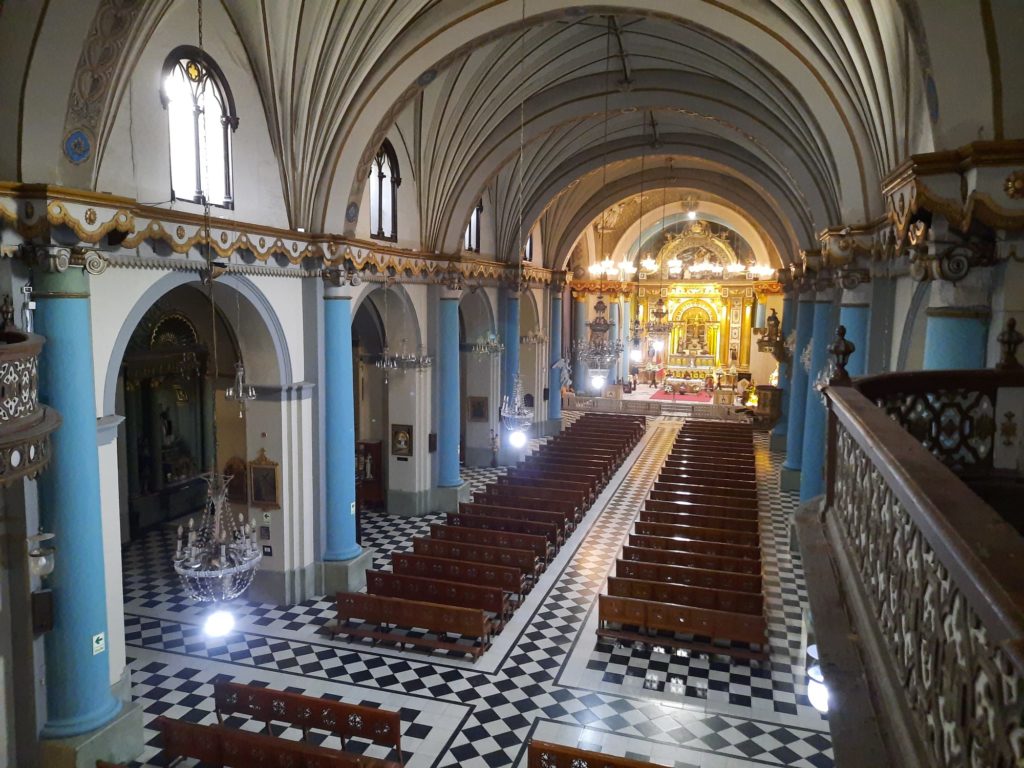
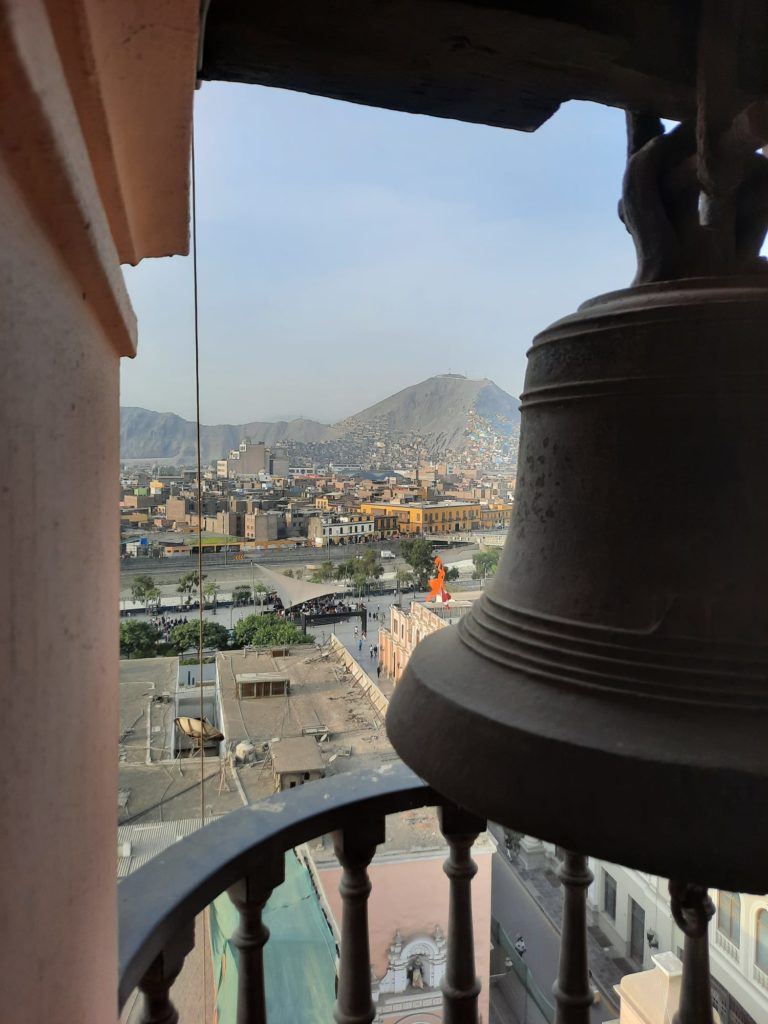
Basilica and Convent of Santo Domingo
This church and convent complex is officially the Basilica and Maximus Convent of Nuestra Señora del Rosario. But it’s the main Dominican spot in town, and so also goes by Santo Domingo. And interestingly it was from this spot that the oldest university in the Americas, the University of San Marcos, began its journey.
In a tale that is now becoming familiar, the first church on this site was completed in 1578, and then completely destroyed by an earthquake in 1678 (and damaged by later earthquakes). The present bell tower is a 1766 design. Like other religious sites in Lima, you can find chapels with incredible Baroque altars, peaceful cloisters, and historic religious art. A point of difference which makes Santo Domingo interesting and (if my vote is worth anything) gives it an edge over San Francisco is that Santo Domingo is a site of veneration for some of Peru’s most important saints.
Santo Domingo has connections to Saint Martín de Porres, Santa Rosa de Lima and Saint John Macías, in life and in death. Today’s visitors can see a crypt dedicated to Santa Rosa, and see where Martín de Porres lived, worked and slept. The skulls of these two saints are on view in the free-to-enter church. And if you do the tour of the convent you can see some interesting work done to 3D model all three saints’ skulls and create facial reconstructions.
The tour at Santo Domingo culminates in a climb up the bell tower. There are pretty good views, especially across the river where you probably won’t visit as a tourist. My advice (which goes for pretty much anything outdoors you want to visit in Peru) is that late afternoon is the best time for photos. The light is a peachy-golden colour at this time. Pictures turn out a lot better than the often misty/hazy (in winter) mornings.
I would love to tell you more about Santo Domingo. But I unfortunately convinced the ticket seller that my level of Spanish was ok, so she sent me on a Spanish-language tour! This was great as it meant I didn’t have to hang around for an English version, but also means you might have to read more for yourself here.
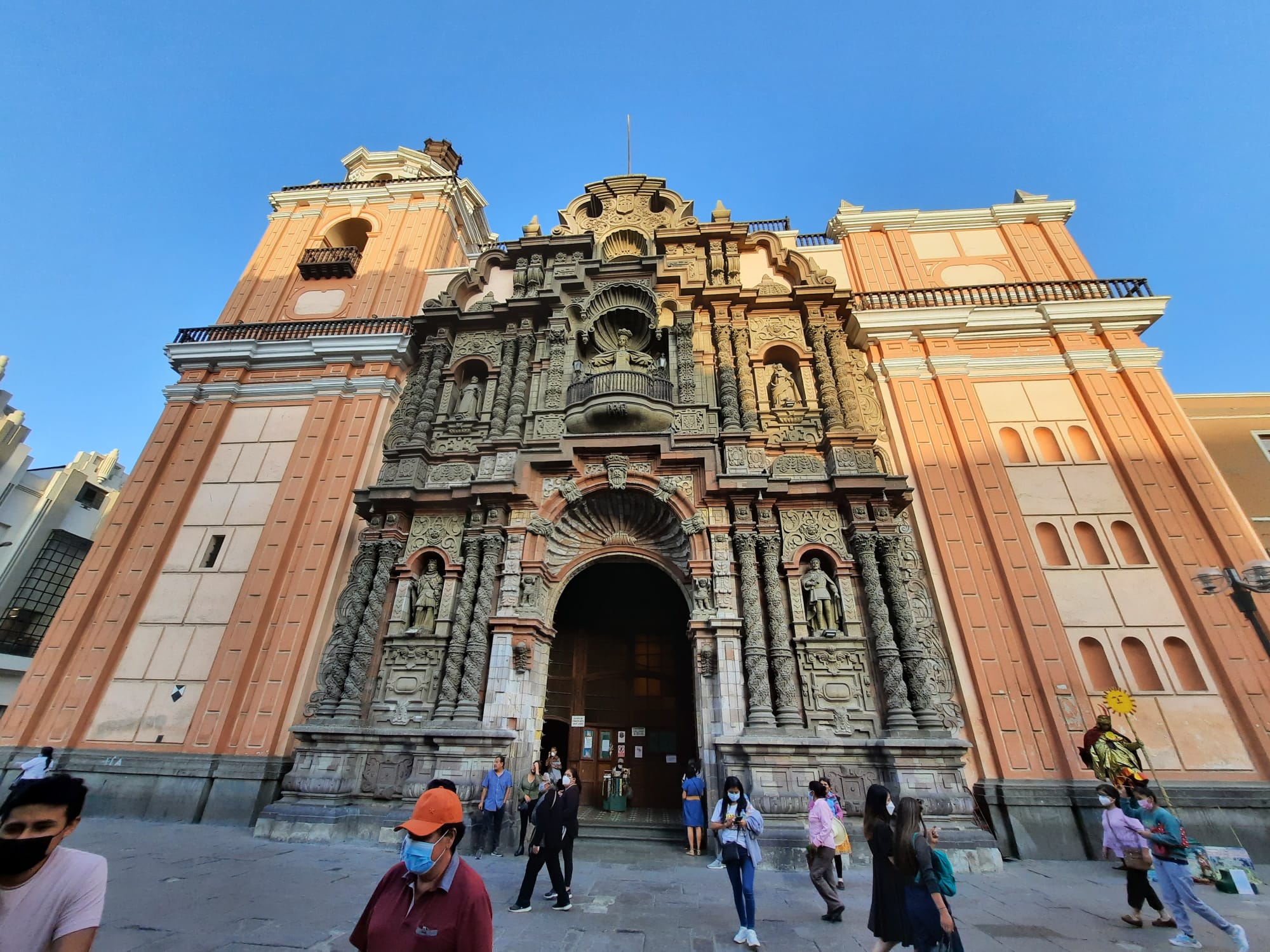
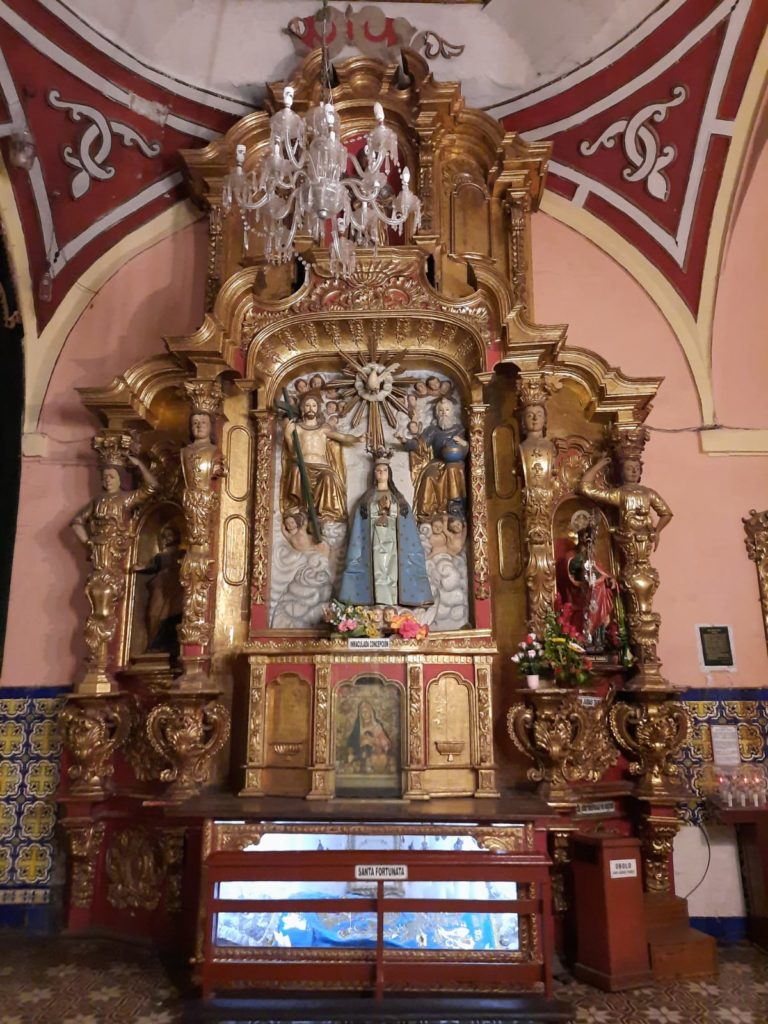
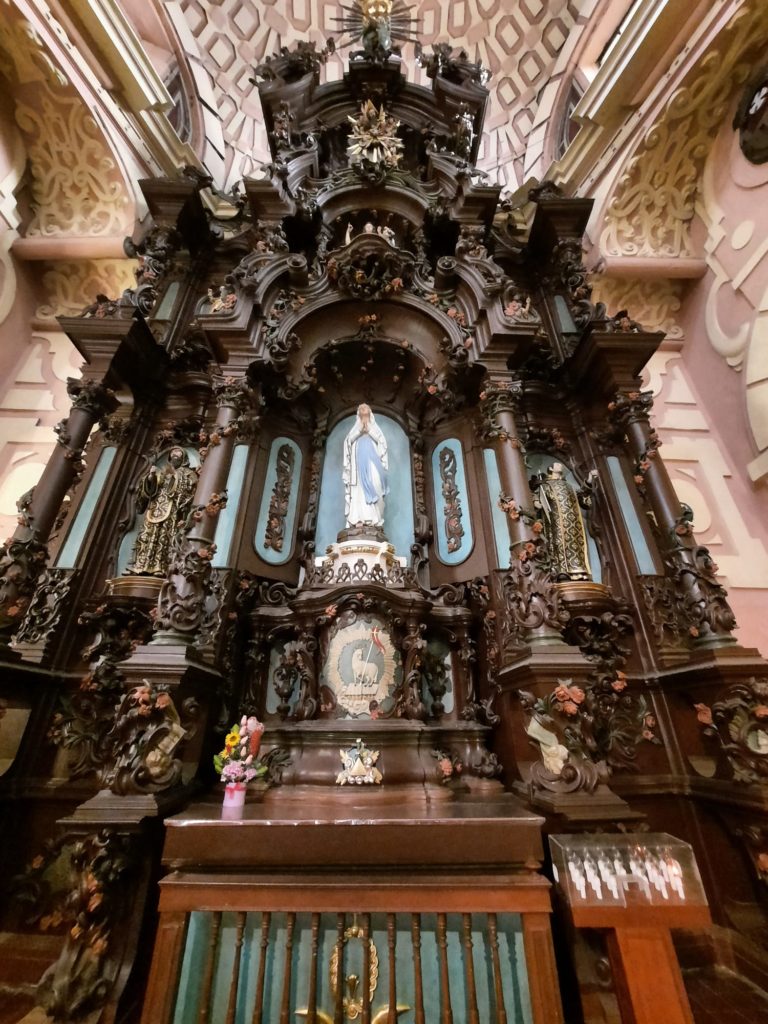

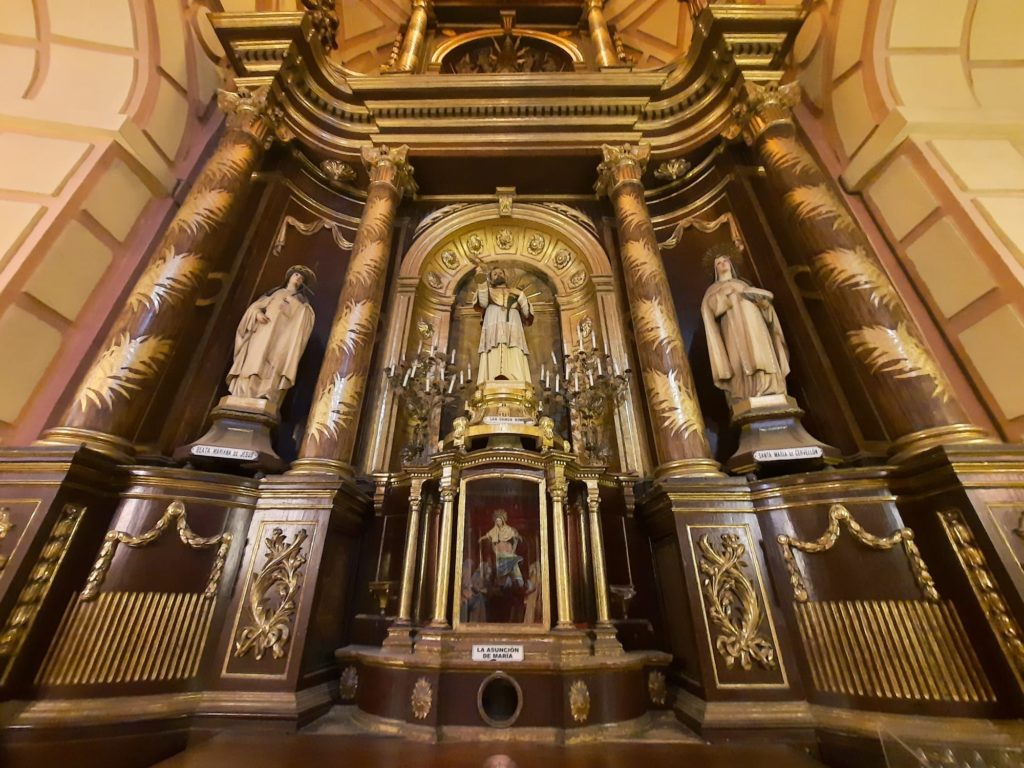
Basilica and Convent of Nuestra Señora de la Merced
So I briefly mentioned the Mercedarians above: the Royal, Celestial and Military Order of Our Lady of Mercy and the Redemption of the Captives. Not quite as widely-known as the Franciscans or Dominicans, but equally important in terms of their mark on Lima’s religious fabric. The Mercedarians and their tireless evangelisation were actually important in the development of Lima as a whole. And this church is a little older than the others, not having sustained as much earthquake damage. It’s a 16th-Century structure of adobe and brick, with a Baroque entrance dating to 1591 and a tower which was the first ‘high rise’ colonial structure in Lima.
La Merced is the best option (in my opinion) if you want to get a sense of a working church in Lima today. It has the same side chapels and impressive altars as elsewhere, but buzzes with a bit more activity. Locals stop in on their way to or from work, and you may well catch a service in progress. This is the case in other churches too. But La Merced just feels a little less ‘polished’ and a little more authentic. There are no paid tours. It’s just the church which you can enter respectfully for worship or to visit as a tourist.
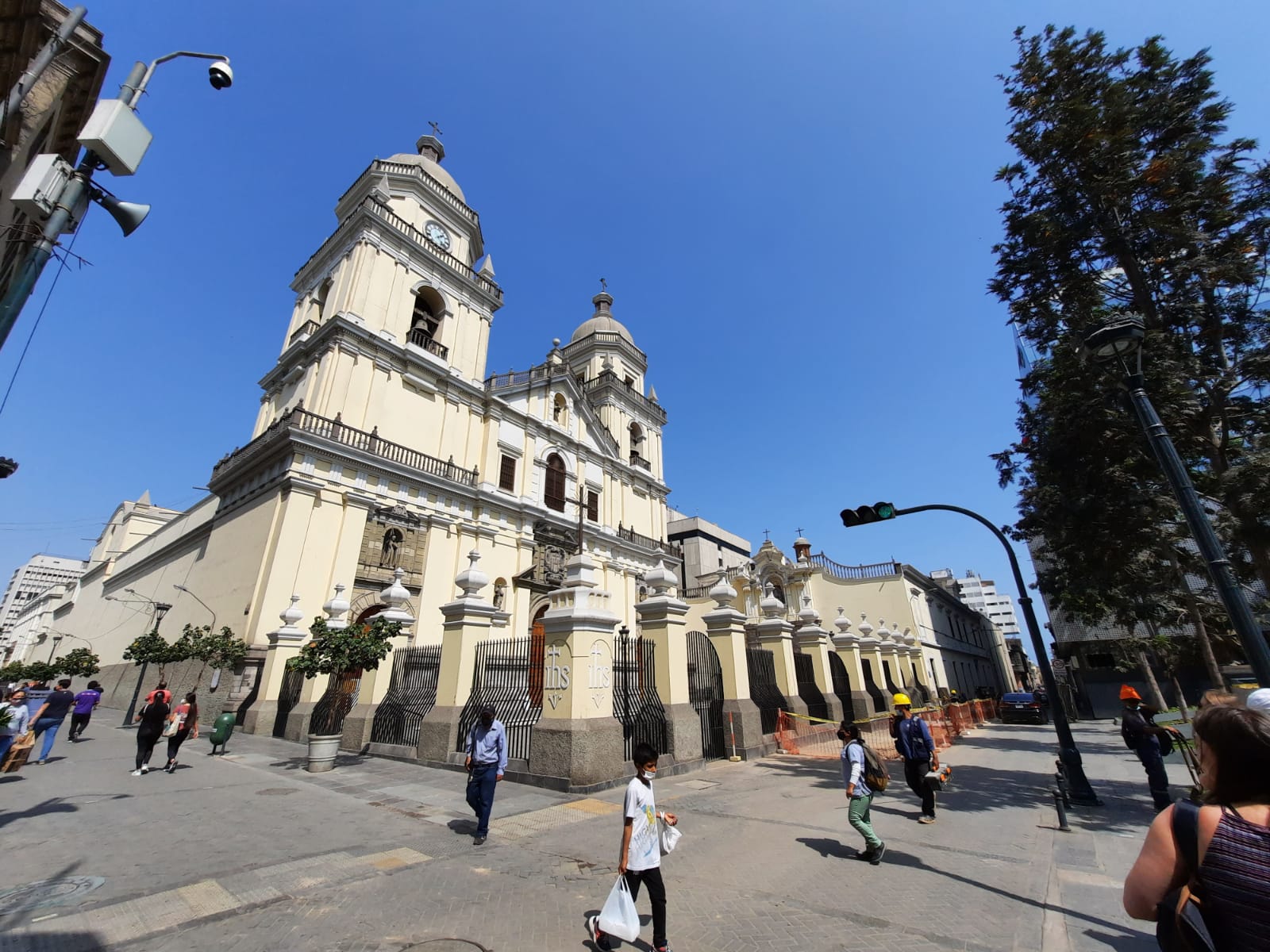
Basilica and Convent of San Pedro
This is the main Jesuit church of Lima. We couldn’t finish our tour of religious orders without the Jesuits, could we now? San Pedro has a different vibe than the other churches we have visited. Again there are no photos allowed. And there is someone stationed outside to check Covid passes before entry (or at least there was when I visited in May 2022). Inside, it is polished and peaceful. It doesn’t have the lively vibe of La Merced. There are worshippers, but everything feels more restrained, which adds to the sense of awe created by the luxurious interior.
Jesuits were in Peru from the early days of the Conquest. So it’s perhaps no surprise that their church and convent reflect ongoing status. This church is worth a look if you want to see a contrast (or complete your checklist of the main orders), but if you’re time poor is probably one you can safely skip.
Thanks for joining me on this tour of key religious sites in Lima! Sign up below for more posts on travelling in Peru, as well as regular London cultural content.
Trending
If you see this after your page is loaded completely, leafletJS files are missing.

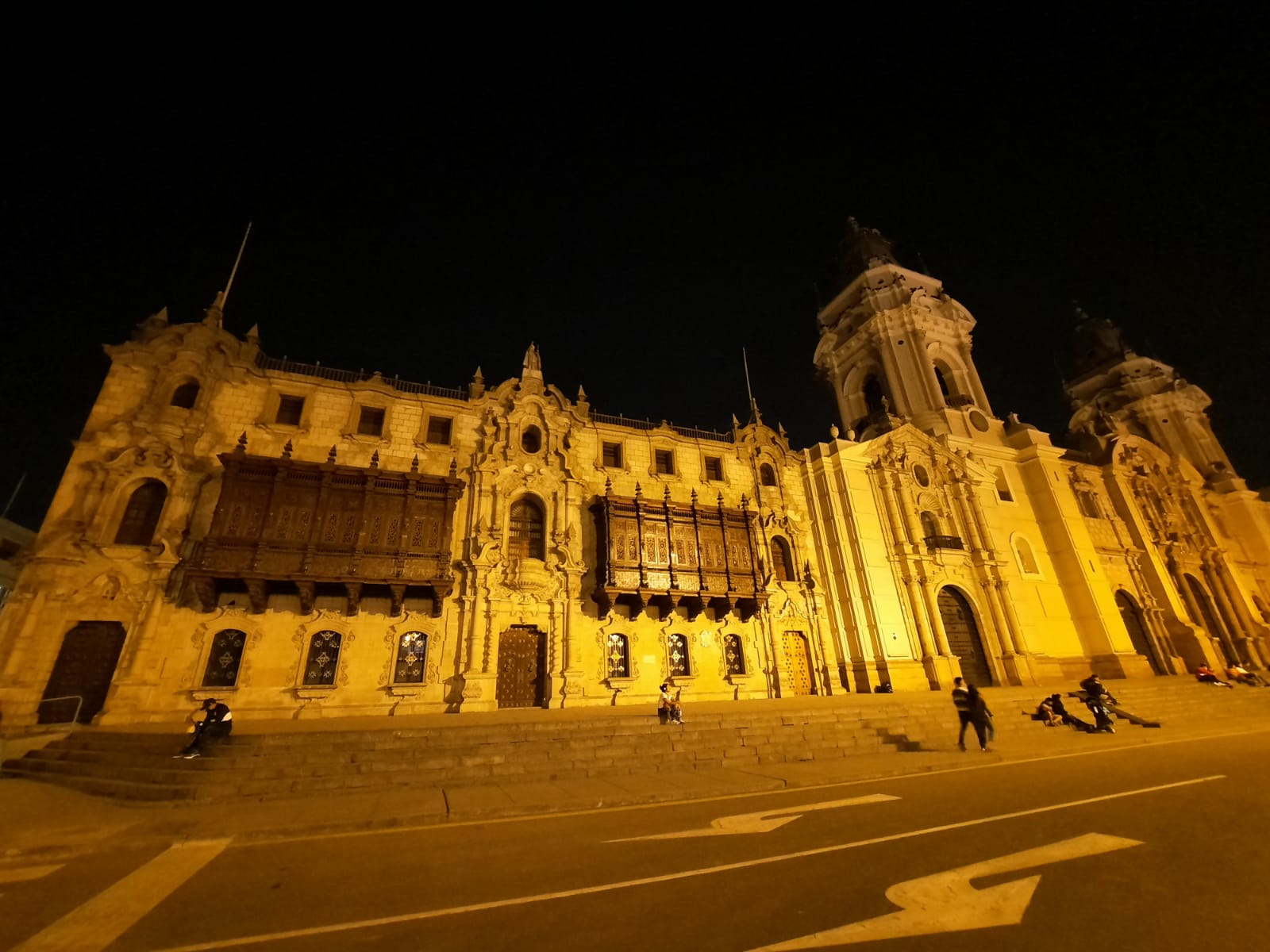
6 thoughts on “Lima’s Religious Sites: A Historian’s Guide”